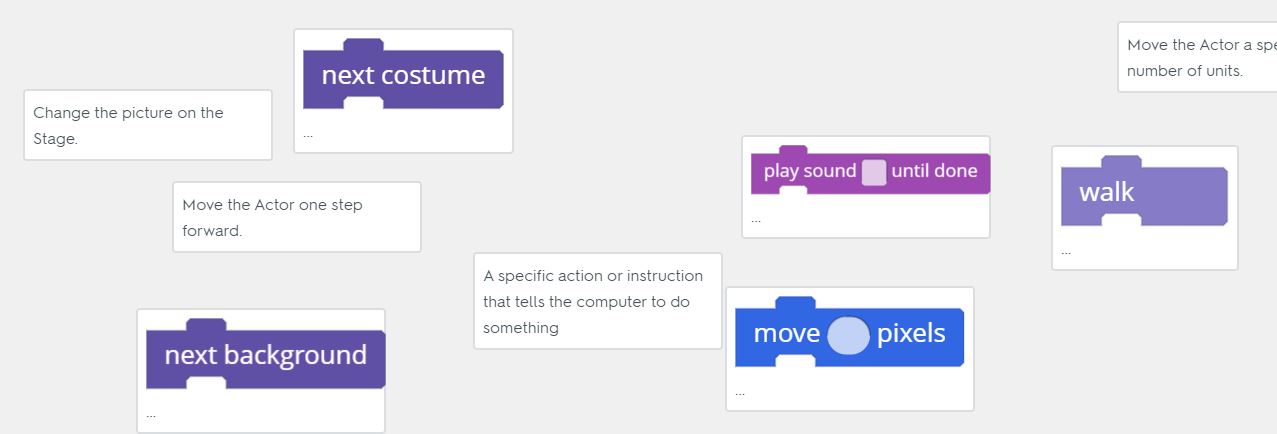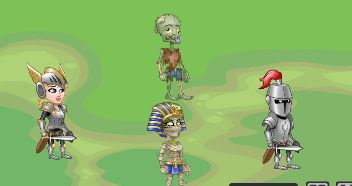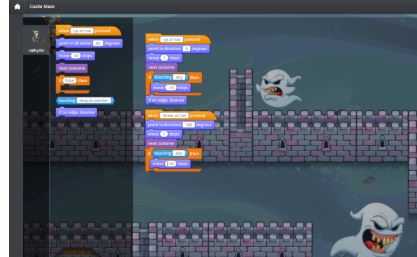CHOICE:
-
Students can choose to work quietly to complete Tynker lessons that may not be complete
(see Wednesday - Friday below) -
Students can choose to study at Quizlet and get ready for Quizlet live.
How about those vocabulary words?!!!
Now we will continue to Tynker around!
|
 |
||||||
|
|||||||
Wednesday - Friday
Tynker Programming
Lessons 5 & 6: Conditional Loops and Show and Hide (resource page)
In lesson 5, students will learn how to specify an Actor’s costume and learn about the “forever-if” loop. Students will also create a project that uses function blocks. Coding concepts covered in this lesson include: Next Costume and Forever If.
In lesson 6, students will learn how to show and hide Actors using conditionals. Coding concepts covered in this lesson include: When Event Occurs, Costume #/Name, and Operators.
Learning Intention: Students will...
Complete the 5th & 6th Lessons and learn the new code blocks used.
- Switch to costume
- Forever if
- walkRight, walkLeft, walkUp, walkDown
Vocabulary:
Function: A sequence of commands that can be run together as if it were a single command
Success Criterion: You will...
- Vocab word done
- complete the activities in 301 Lessons 5 & 6 (again if you did them last year).
- Used conditional loops to animate Actors
- Used code blocks to solve a puzzle module
- Reflection for today - Sentence starter:
Using the tutorials for creating the programs . . .Standards
CSTA :
2-AP-13: Decompose problems and subproblems into parts to facilitate the design, implementation, and review of programs.
2-AP-16: Incorporate existing code, media, and libraries into original programs, and give attribution. ,
2-AP-17: Systematically test and refine programs using a range of test cases.
ISTE: 5c Students break problems into component parts, extract key information, and develop descriptive models to understand complex systems or facilitate problem-solving.
Monday is gone, but Tuesday:
Tynker Programming
Lesson 4: Motion and Tracking (resource page)
In this lesson, students will learn how to program keyboard keys (web) or tilt controls (mobile) to direct Actors to point and move in specific directions. Students will also create a fun maze game while learning how to program Actors to detect when they’re touching another Actor or the edge of the screen. Coding concepts covered in this lesson include: Point in Direction, When Key Pressed, and Touching?
New Code Block:
: If the condition is true, then run the code inside the block.
Learning Intention: Students will...
Complete the 4th lesson on Motion & Tracking
- Point in Direction
- When Key Pressed
- If statement where you plug in a touching block
Ensure that the one lesson at code.org is complete.
Success Criterion: You will...
- Vocab word done: Conditional statement:
A type of statement that executes different parts of the code based on whether a logical expression evaluates to true or false- complete the activities in 301 Lesson 4 (again if you did them last year).
- Reflection for today - Sentence starter:
So far, using Tynker to do the coding is ...Standards
CSTA :
2-AP-13: Decompose problems and subproblems into parts to facilitate the design, implementation, and review of programs.
2-AP-16: Incorporate existing code, media, and libraries into original programs, and give attribution. ,
2-AP-17: Systematically test and refine programs using a range of test cases.
ISTE: 5c Students break problems into component parts, extract key information, and develop descriptive models to understand complex systems or facilitate problem-solving.



